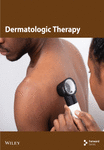Efficacy and Safety of Tofacitinib in Patients With Refractory Prurigo Nodularis: A 16-Week, Single-Center, Prospective, Observational Pilot Study
Abstract
Background: The current management for prurigo nodularis (PN) is challenging. Tofacitinib may emerge as a promising treatment for PN.
Aim: This study aimed to assess the efficacy and safety of tofacitinib in treating refractory PN.
Design and methods: A 16-week prospective observational pilot study was conducted in patients with moderate-to-severe refractory PN. The enrolled patients received oral tofacitinib. The primary endpoints included improvement in pruritus and quality of life, as measured by investigator’s global assessment (IGA), prurigo activity score (PAS), visual analog scale (VAS), numeric rating scale (NRS), verbal rating scale (VRS), Dermatology Life Quality Index (DLQI), and Itchy Specific Quality of Life (Itchy QoL) at week 12. Secondary endpoints were the proportion of patients with a ≥ 4-point reduction in Worst Itch-Numeric Rating Scale (WI-NRS) from baseline at week 12 and week 16. Safety assessments were conducted through week 16. Besides, historical controls, mixed-effects model (MMRM), and post-hoc analyses were performed to evaluate the efficacy of tofacitinib.
Results: Twenty-four PN patients included demonstrated clinical improvement in terms of skin lesions, pruritus, and quality of life. IGA, PAS items, VAS, NRS, VRS, DLQI, and Itchy QoL significantly improved from the baseline to 12 weeks of tofacitinib treatment (p < 0.05 for all). However, the response to tofacitinib became less pronounced at week 16, with reduced improvement in skin lesions, itch, and quality of life compared to that at week 12. The percentage of patients experiencing a ≥ 4-point WI-NRS reduction decreased from 75% at week 12% to 66.67% at week 16. The results of historical controls, MMRM model, and post hoc analyses supported the clinical efficacy of tofacitinib in PN, with baseline NRS24h,worst appearing to be a potentially clinical feature impacting treatment efficacy. No severe adverse events were reported up until the end of the study period.
Conclusions: Tofacitinib demonstrates effectiveness in reducing itch and skin infiltration in patients with moderate-to-severe PN, whereas its long-term efficacy requires further observation.
Trial Registration: ClinicalTrials.gov identifier: NCT06201715
Conflicts of Interest
The authors declare no conflicts of interest.
Open Research
Data Availability Statement
The data that support the findings of this study are not publicly available due to the privacy of research participants but are available from the corresponding author upon reasonable request.




